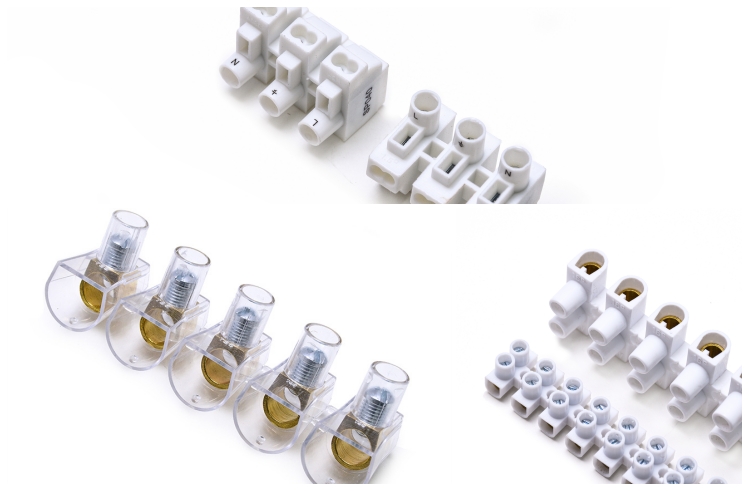When it comes to electrical installations, terminal blocks play a crucial role in connecting and managing wires efficiently. Choosing the right terminal block can impact your electrical systems' performance, safety, and maintenance. Here's a step-by-step guide to help you select the perfect terminal block for your needs.

1. Determine Current and Voltage Ratings
The first step in selecting a terminal block is understanding the electrical specifications of your application.
Current Rating: Ensure that the terminal block can handle the maximum current that will flow through it. Most terminal blocks come with a specified current rating, which is essential for preventing overheating and ensuring safety.
Voltage Rating: Check your system's voltage requirements. The terminal block should have a voltage rating that exceeds the maximum voltage of your application to avoid breakdown and potential hazards.
2. Assess the Number of Poles Needed
Terminal blocks come in various configurations, including single-pole and multi-pole options.
Single-Pole: Ideal for simple applications where only one connection is needed.
Multi-Pole: Useful for more complex setups, allowing multiple connections in a single block. Determine how many wires you need to connect and choose accordingly.
3. Choose the Right Connection Type
The connection method is vital for ease of installation and maintenance. Here are some common types:
Screw Connections: These are widely used and provide a secure connection, but they can be time-consuming to install.
Spring Connections: Offer a quicker and tool-less method for securing wires, making them ideal for rapid installations.
Plug-in Connections: Useful for modular designs, allowing for easy disconnection and reconnection.
Choose a connection type based on your preferences and the specific requirements of your project.
4. Consider Mounting Style
Terminal blocks come in different mounting styles, so it’s essential to select one that fits your installation environment.
Din Rail Mount: Perfect for industrial settings, allowing for easy installation on standard din rails.
Panel Mount: Ideal for applications where the terminal block needs to be secured to a panel or enclosure.
Evaluate your space and decide which mounting style works best for you.
5. Evaluate Material and Insulation
The materials used in terminal blocks can affect their performance and durability.
Material: Look for high-quality materials that can withstand environmental conditions (e.g., temperature, humidity). Common materials include thermoplastics and metal alloys.
Insulation: Ensure the insulation meets safety standards and is appropriate for your application, especially if it will be exposed to harsh conditions.
6. Check for Size and Space Constraints
Before making a final decision, consider the physical space available for your terminal block.
Dimensions: Ensure the terminal block fits within your design constraints without overcrowding other components.
Spacing: Adequate spacing between terminals is essential to prevent short circuits and allow for proper heat dissipation.
Selecting the right terminal block requires careful consideration of various factors, including electrical specifications, connection types, and mounting styles. By following these guidelines, you can make an informed decision ensuring your electrical systems' safety and efficiency. Whether you’re working on a simple project or a complex industrial installation, the right terminal block will make all the difference.

Our hours